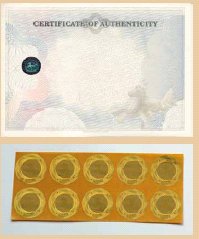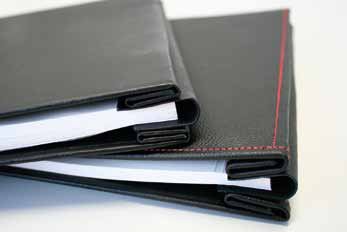articles/Presentation/perception-page2
Presentation It's all about perception! - part 2 of 1 2 3
by Mike McNamee Published 01/06/2013

*A Certificate of Authenticity usually contains all or most of the following information:
1. The title of the piece.
2. The name of the author/artist.
3. The size of the edition and the number of the actual print - typically written say 10/150 for the tenth print in an edition of 150 prints.
4. The physical size of the paper on which the print is made.
5. The weight and type of paper.
6. The type of printing used (eg the printer and ink set).
7. The date of creation.
8. The author's signature.
Album and Portfolio Books
Another way of protecting your prints, and a portfolio in particular, is to bind them up into a book. While books such as Blurb provide a convenient way to collate a body of work they are a long way from fine art quality! Many paper manufacturers can provide pre-punched fine art paper for assembling copies of prints into a sturdy, bound book - it's a variation of the wedding album really and the same books can be used as wedding albums. The advantage of the Hahnemuhle Fine Art Inkjet Album is that the 'post-bound' method of construction allows the user to change prints should one become damaged or be inappropriate for an intended viewing. Thus you can imagine assembling different sets of images to take along to show different galleries who might specialise in various genres of art. Once again, though, it is all about perception - a nicely leather-bound book says a lot more than dragging your shoe-box of prints into an art buyer!

Fine Art Varnishes
Hahnemuhle have three varnishes for use with fine art prints. They will mainly be used on canvas but they also provide substantial protection for paper prints. Varnishes both protect against light fading and surface damage.
The varnishes are applied by spooning a puddle into the middle of the flat print, to occupy about a quarter of the surface area. This puddle was then 'pushed' around the surface very gently using a high-density foam roller and only the weight of the roller itself. The coated print is then rested to allow the varnish to level down and any bubbles to be released. Vigorous brushing or rollering is not recommended as it causes foaming and can even rub ink from the 'hill tops' of the canvas. The prints dry fully in a couple of hours. We use a single coat and our preferred method is to apply a single coat, frame up and stretch the canvas and then apply a final coat to the stretched canvas.
Please Note:
There is more than one page for this Article.
You are currently on page 2
- Presentation It's all about perception! page 1
- Presentation It's all about perception! page 2
- Presentation It's all about perception! page 3
1st Published 01/06/2013
last update 09/12/2022 14:57:31
More Presentation Articles
There are 21 days to get ready for The Society of Photographers Convention and Trade Show at The Novotel London West, Hammersmith ...
which starts on Wednesday 14th January 2026





